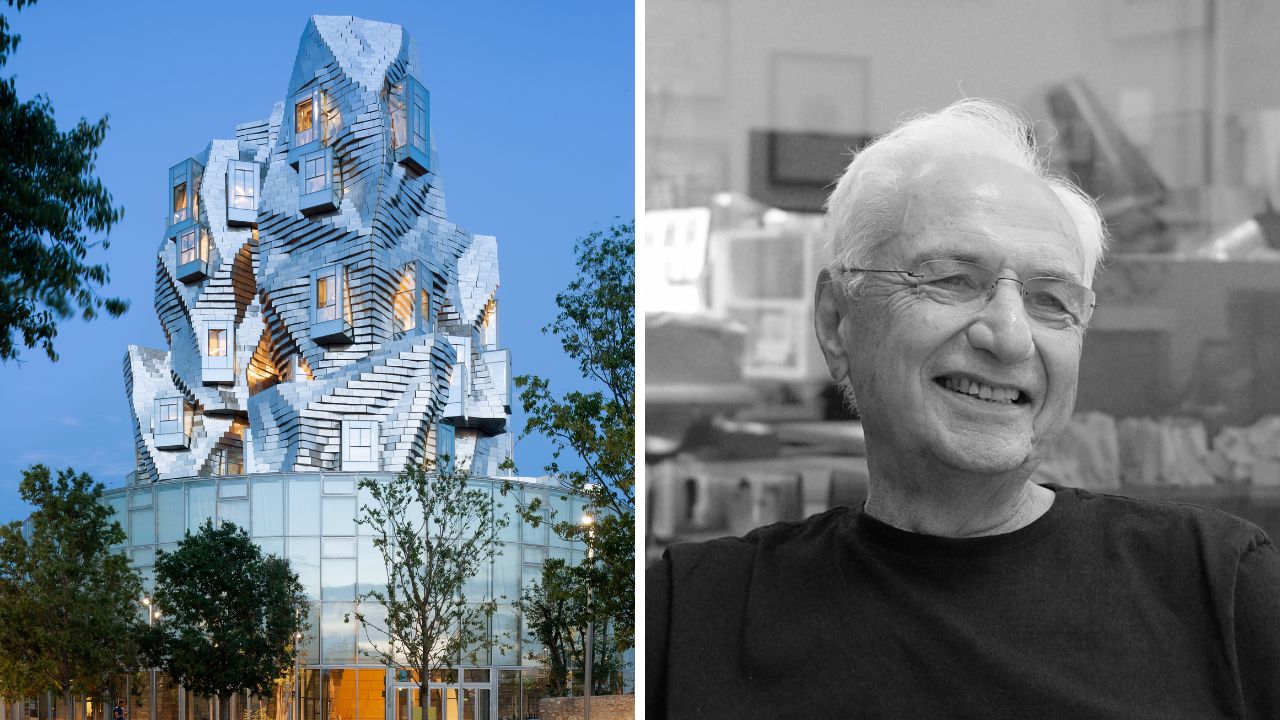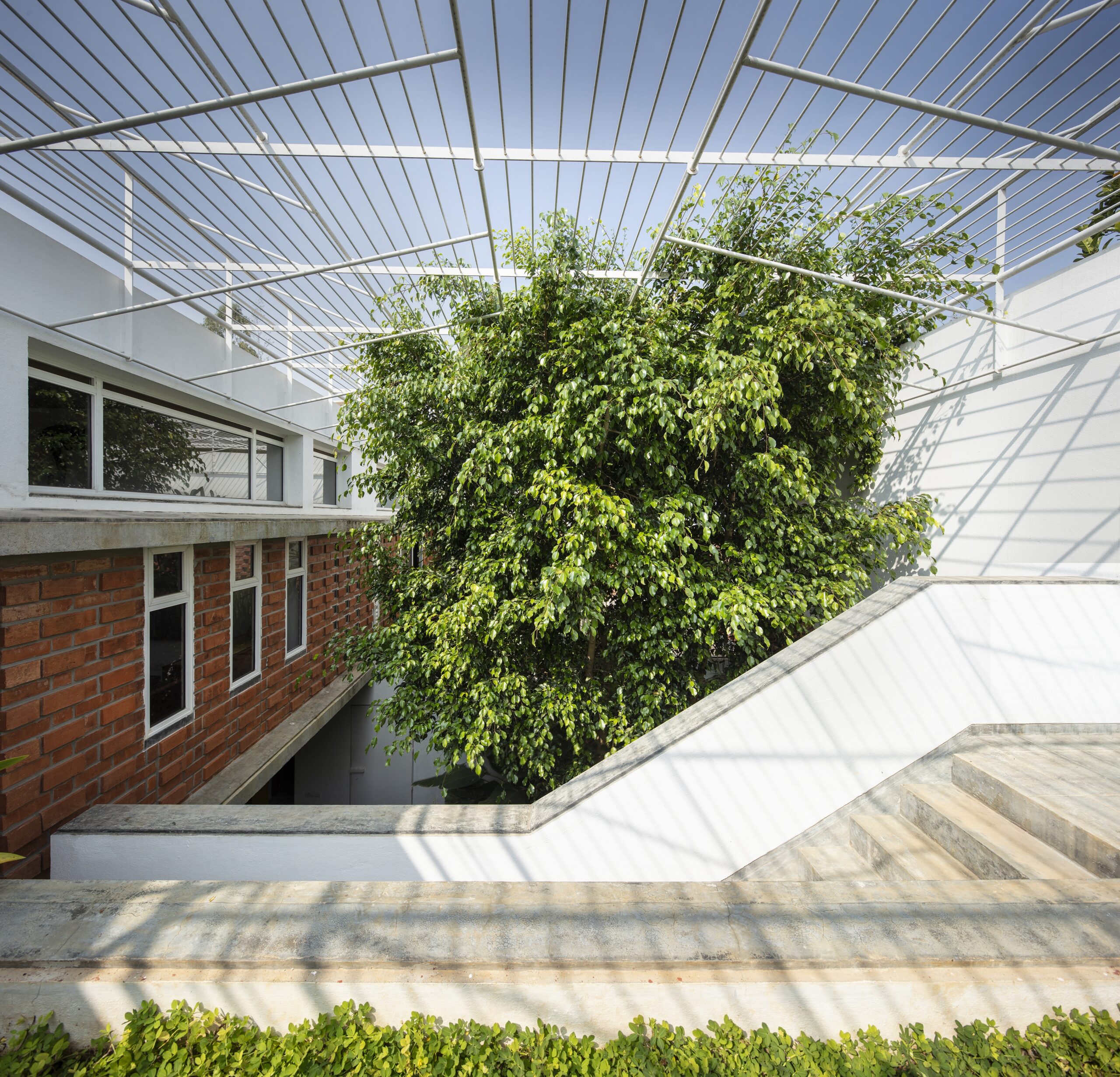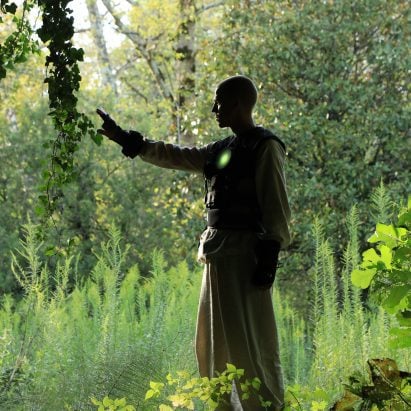"Glastonbury is not an escape from the real world but a snapshot of what is to come"


Creeping security infrastructure at Glastonbury takes the coercive tactics shaping Britain's streets to their next logical step, writes Phineas Harper.
Deep in the English countryside, amid a landscape of picturesque rolling pastures and ancient standing stones, sits a corner of Manhattan. A fragment of the 1970s Meatpacking District as it looked five decades ago, spirited through space and time to bucolic Somerset.
This weird slice of pre-gentrification New York is an elaborate architectural stage set: the NYC Downlow, a pop-up nightclub created every year since 2007 for a long weekend of drag and dancing at Glastonbury Festival.
The festival is packed with architectural narratives and spatial design
Glastonbury, the world's largest greenfield festival, is no stranger to architecture. Alongside its programme of music, circus, theatre and cabaret, the festival is packed with architectural narratives and spatial design.
Alongside the Downlow, there's Sweet Charity, a spaceship-like tropical disco venue designed by Cody Dock rolling bridge creator Thomas Randall-Page; a spiral pavilion constructed from reclaimed timber and mycelium; until recently, tensegrity towers by structural engineer Morgan Trowland, and, of course, the iconic Pyramid Stage designed by local villager Bill Boroughs.
Co-founded by artist and music producer Gideon Berger, the Downlow was the world's first specifically queer venue to open at a music festival. It morphs in appearance every few years, reviving different 70s street fronts with each manifestation.
One time a yellow taxi cab appeared to have crashed into the Downlow's upper storeys. Another year, slabs of meat hung alongside scantily clad, smouldering performers.
But why transplant a historic New York facade to rural England? "The Meatpacking District was a place where queer love and music and pleasure and hedonism ended up, because old warehouses were taken over and turned into clubs," explains Lucas Facer, an architect and veteran of building the venue.
"The music that's played in the Downlow comes from the industrial urban centres in America that were occupied by queer musicians. The Downlow is an homage to a form of music that everyone in that scene is deeply connected to."
Queueing has become a central part of the Glastonbury experience
There's also a politics to the design. New York was a centre of the AIDS crisis and still carries within its architecture a weight of ancestral trauma that is felt by the queer scene internationally, even among those who have never visited. To recreate a piece of the city is, in part, an act of remembrance – a tribute to a place steeped in meaning, and the community connected to it.
For all its inclusive politics, however, getting into the Downlow is hard. The capacity is only around 500, which, with 200,000 people on site, means the queues have grown exponentially with the venue's fame. "The festival is unfair in that way," Facer tells me. "You've already paid 300 quid to get in there and now you have to queue?"
It's not just the Downlow where queueing has become a central part of the Glastonbury experience. The festival's countercultural past, entangled with the traveler community, environmentalism and the peace movement, has gradually given way to creeping managerialism.
The whole design of Glastonbury's contemporary infrastructure is increasingly centred on one-way systems and other large-scale crowd control tactics. For festival managers queues are useful, keeping slow-moving audiences contained with little opportunity for unexpected behavior. For everyone without a VIP wristband, however, the show can feel like a big party you're always waiting to get into.
Other systems of control have arrived too. QR-code wristbands now enable ID scans during the festival build. Drones are used to surveil camping fields from above. Stewards come equipped with light-up battens to direct crowds and security have night-vision goggles to spot fence-jumpers.
The towering accretion of securitisation means the main spatial experience of the festival is less dancing in the shadow of the Pyramid Stage, and more being herded between fields like the dairy cows that graze the site the rest of the year.
Security is fencing off beaches, safety is teaching people to swim
The justification for all these control tactics is always safety. In Glastonbury, as across Britain, every new form of urban management promises to make us safe. Facial-recognition cameras in Croydon. Parks newly locked shut at night. Removing benches from recreation areas. London now has more CCTV cameras per capita than any city in the world outside China.
Since 1989, the British police have been gradually amassing influence over new architecture. Despite damning reports that have found some constabularies to be institutionally homophobic, racist and misogynistic, police officers are routinely consulted on the design of housing estates, schools, and public spaces.
Their demands are always the same: more security gates, more security cameras, fewer pedestrian routes, fewer benches. A recipe for fragmented communities and social isolation.
But safety and security are not the same thing. Security is the attempt to eliminate risk, however marginal that risk may be and regardless of any negative consequences. Safety is designing the social systems and support structures which mitigate and deal with risks and mishaps as they arise. Security is fencing off beaches, safety is teaching people to swim.
The ever-more present crowd-control techniques now deployed at Glastonbury Festival follow the exact same coercive logic that is shaping our streets. The festival is not an escape from the real world then, but a snapshot of what is to come.
It's a microcosm of contemporary UK urbanism taken to its next logical step, a place in which the creep of systems of control are omnipresent. The NYC Downlow may offer an architectural glimpse of an American past, but the queues and surveillance that surround it are a vision of Britain's urban future.
Phineas Harper is a design and architecture critic based in London. They were previously chief executive of Open City and curator of the 2019 Olso Architecture Triennale, as well as deputy director of the Architecture Foundation and deputy editor of the Architectural Review. In 2017 they co-founded New Architecture Writers, a programme for aspiring design critics from under-represented backgrounds.
The photo is by Jennifer Hahn.
Dezeen In Depth
If you enjoy reading Dezeen's interviews, opinions and features, subscribe to Dezeen In Depth. Sent on the last Friday of each month, this newsletter provides a single place to read about the design and architecture stories behind the headlines.
The post "Glastonbury is not an escape from the real world but a snapshot of what is to come" appeared first on Dezeen.





_003.JPG)

.jpg)












































